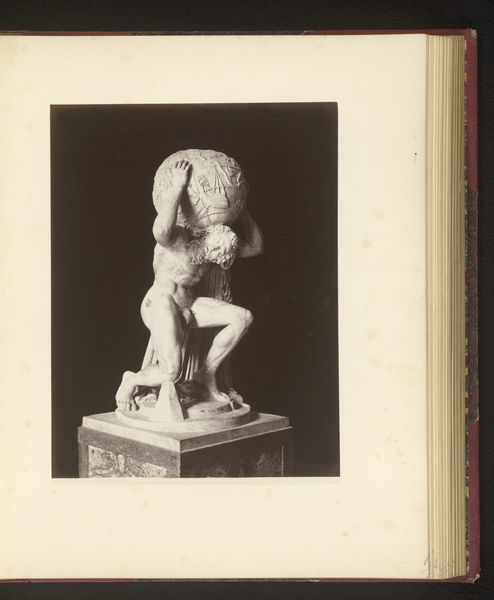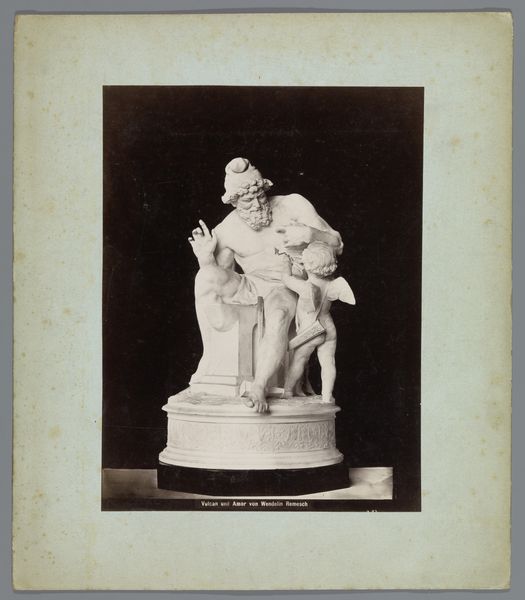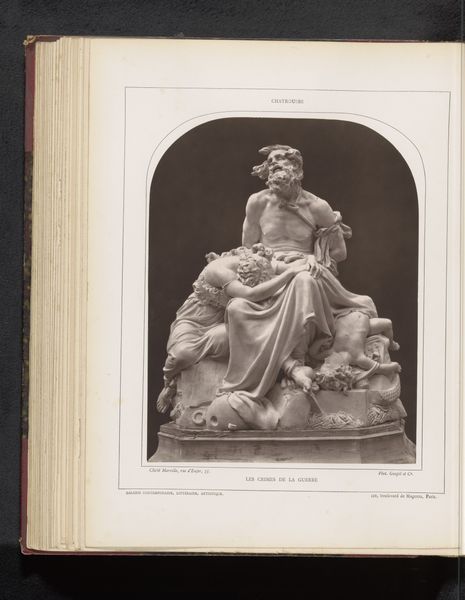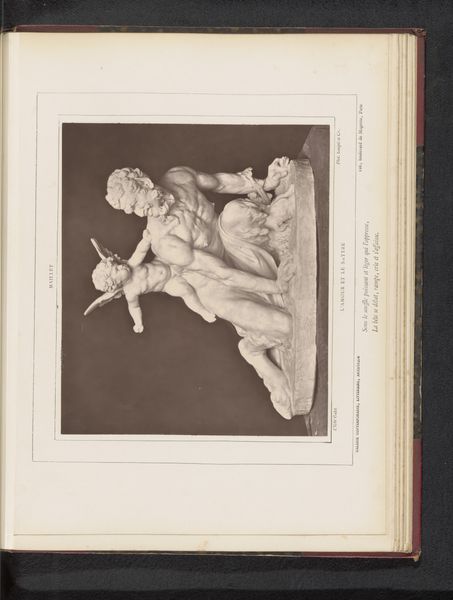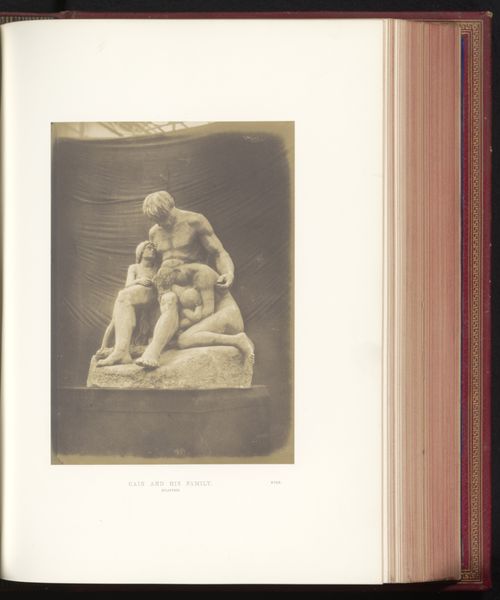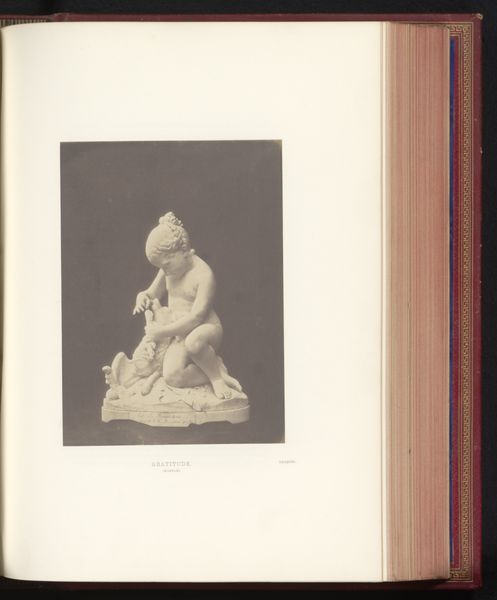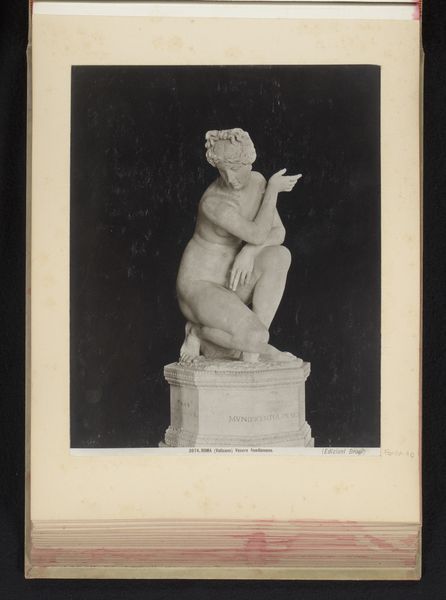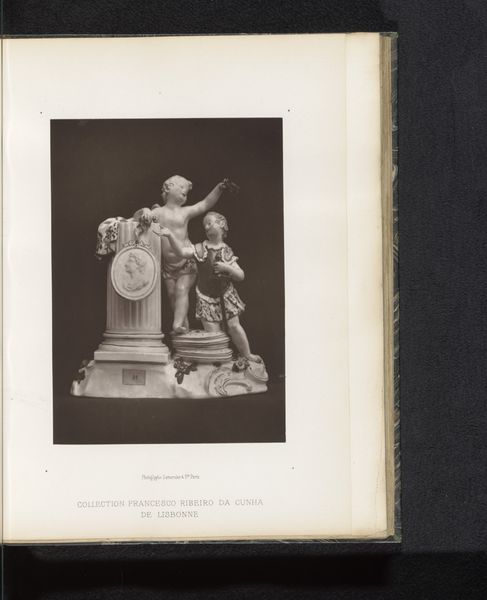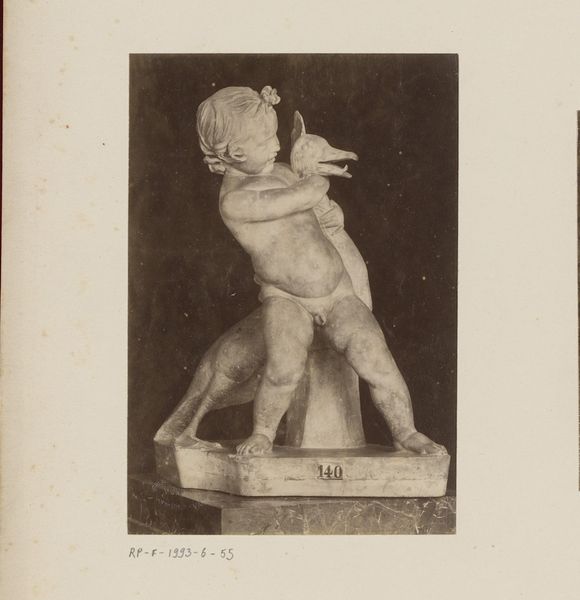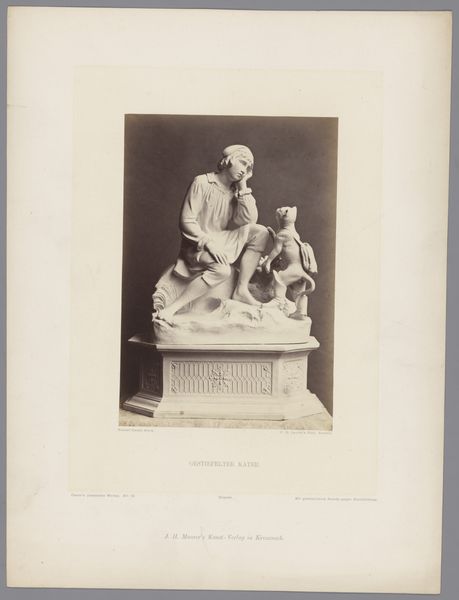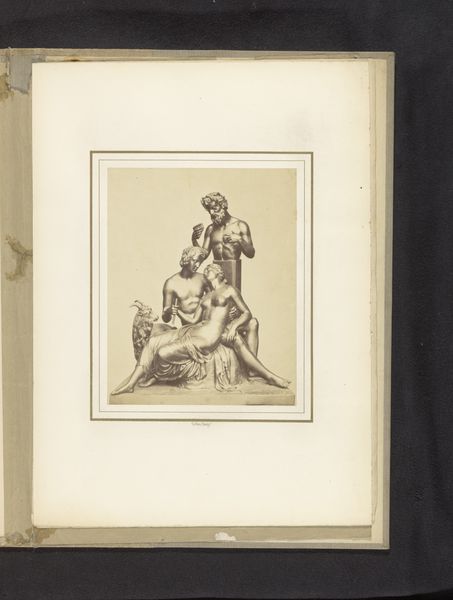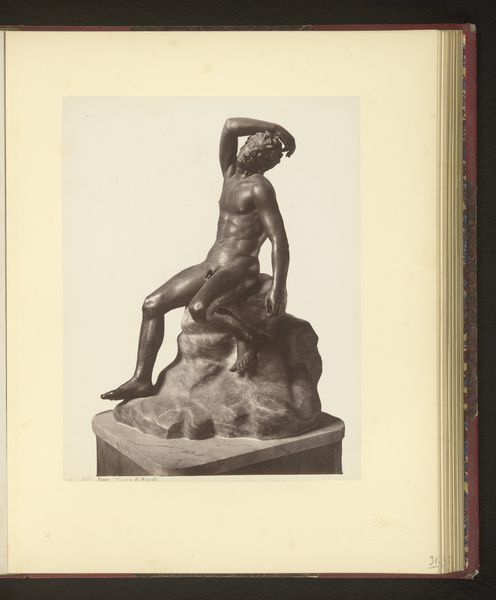
Dimensions: height 237 mm, width 185 mm
Copyright: Rijks Museum: Open Domain
This photograph by Charles Marville captures Jean-Baptiste Carpeaux's sculpture, Ugolin. Made in France, the image reflects the 19th-century academic interest in depicting extreme human emotion, a trend connected to the rise of Realism and its focus on observable experience. Carpeaux's sculpture, rendered here in a black and white photograph, illustrates a scene from Dante’s Inferno. It’s a brutal depiction of Count Ugolino della Gherardesca, imprisoned and facing starvation with his sons. The sculpture and its photograph are steeped in the visual codes of the time, drawing on historical associations and the cultural weight of Dante’s work. The sculpture was originally commissioned for the Tuileries Garden, reflecting the Second Empire's program to populate public spaces with morally instructive and aesthetically pleasing works. Art historians consult documents from the time to understand the political, social and institutional forces that shaped this artwork. The meaning of art, as we see here, depends heavily on its context.
Comments
No comments
Be the first to comment and join the conversation on the ultimate creative platform.
